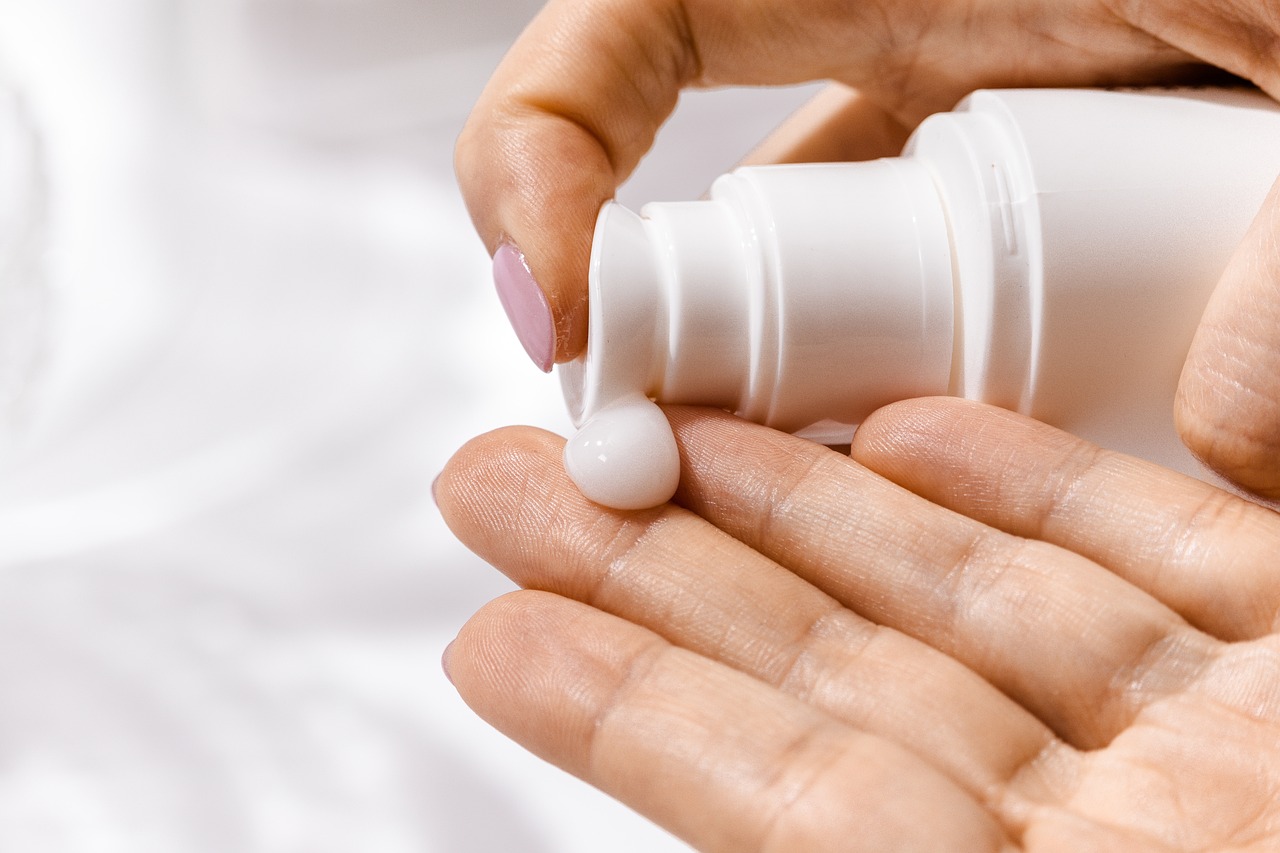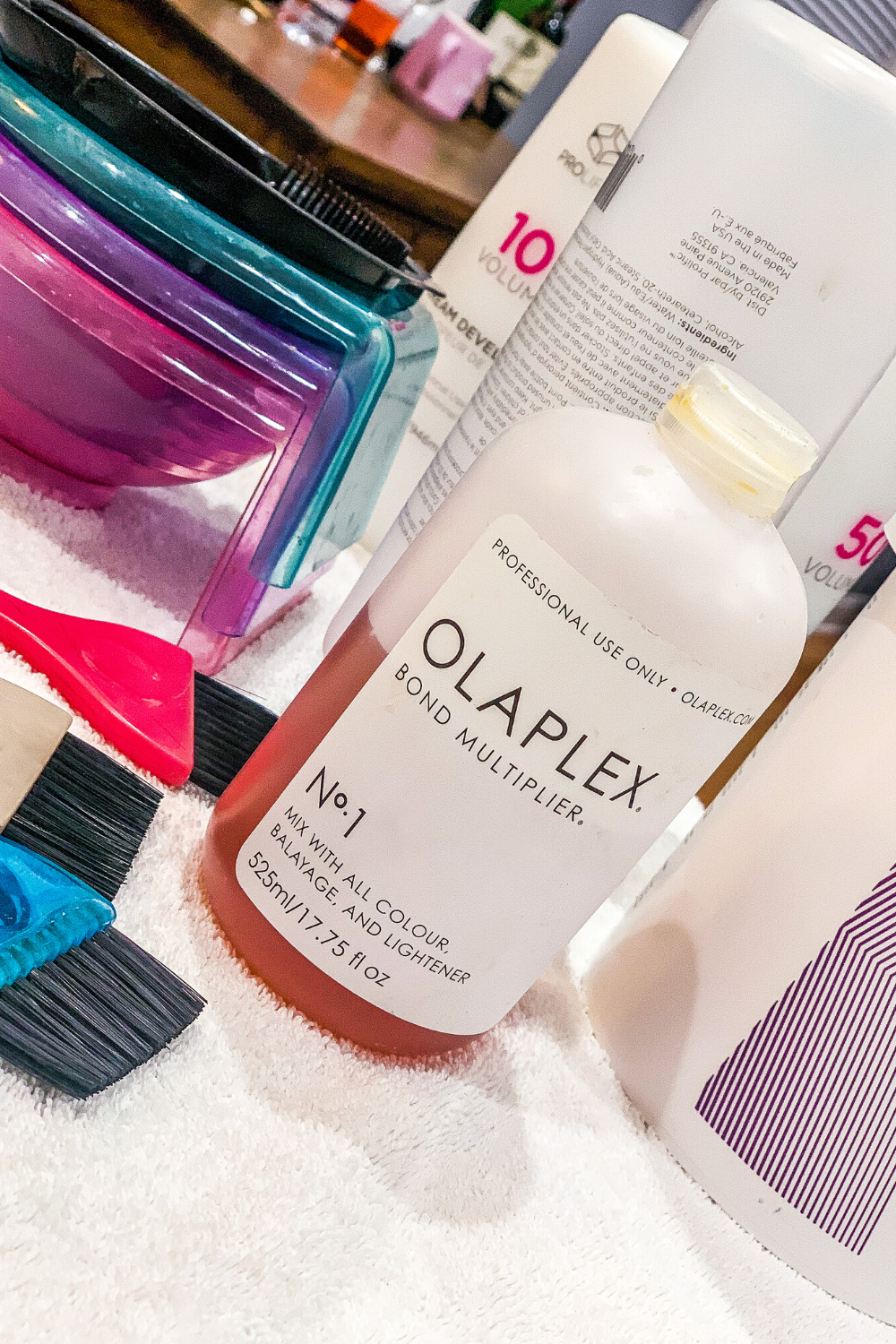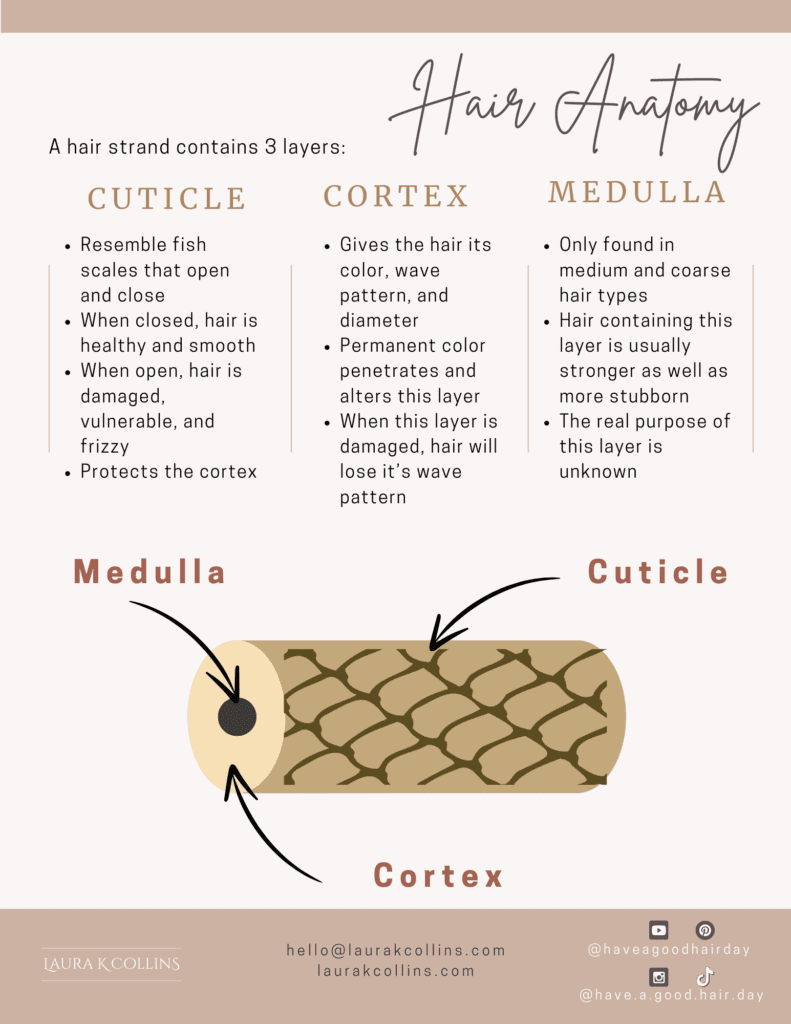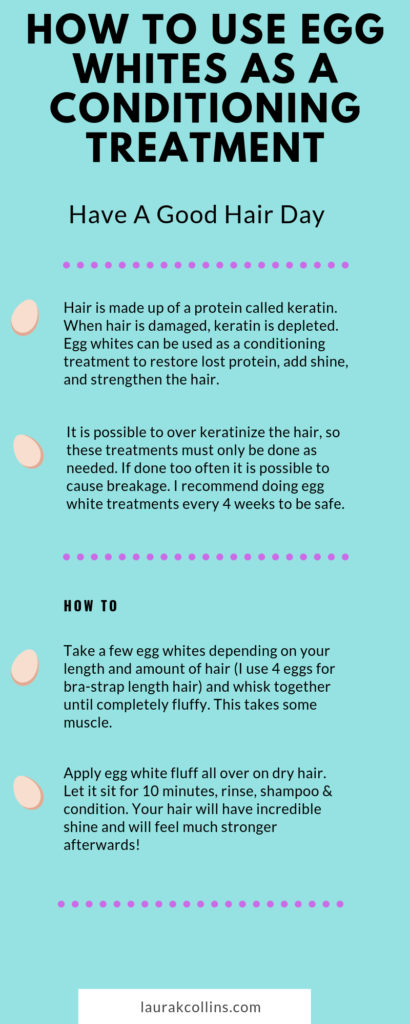
Choosing The Best Deep Conditioner For Your Hair
You’ve likely heard of deep conditioner before, and you know that it’s something that you should use on your hair from time to time to keep it moisturized. But how often should we be using these types of products? And how do we pick one that won’t weigh our hair down? In this post I’m going to cover everything you need to know about deep conditioners and help you incorporate them into your hair care routine.

As a hairstylist, I can tell you that 99% of people don’t use deep conditioners nearly as often as they should. I can immediately tell upon first glance if someone is incorporating a deep conditioner into their hair routine or not.
What are deep conditioners?
Deep conditioners are the same thing as conditioning treatments or hair masks (or masques), and I’ll use these terms interchangeably throughout this post. Typically, “hair mask” is a general term, and “conditioning treatments” is the term that most professional hairstylists will use.
Conditioning treatments moisturize the inner layers of the hair shaft. This type of product is designed to penetrate deeper into the hair than traditional conditioner will. This is important in maintaining the integrity of the hair by keeping the inside of the hair moisturized.
If the inner layers of the hair are dry, the hair will lose its shape, bounce, shine, and is much more susceptible to breakage.

If you’re interested in learning more about the anatomy of a hair strand, see this post here.
What are the different types of hair masks?
If you didn’t know, not all conditioning treatments are created equally. There are three main categories of deep conditioners and they each solve a specific problem. Ultimately, you should incorporate all three of these into your hair care routine.
Moisturizing treatments
Moisturizing treatments are pretty self explanatory. They will deliver moisture to the inner layers of the hair strand. This type of conditioning treatment is responsible for keeping the hair hydrated. It also helps the outer layer of the hair lay down smooth.
The main way to tell if your hair is lacking moisture is by the shine it provides. Is your hair shiny, or is it dull or even staticky?
Bonding treatments
Bonding treatments are conditioning treatments that rebuild the broken bonds in your hair. Bonds are what is holding your hair together, so if the bonds are broken, your hair is weak and damaged.
It’s important to distinguish that bonding treatments do not deliver moisture to the hair. This is a common misconception. In reality the hair often needs both moisture and bonding treatments.
Hair bonds are most often broken by chemical damage, but they can also break from heat styling and aggressive brushing as well.
You can tell if you need a bonding treatment if you have any breakage in your hair. This could be split ends or an uneven perimeter.
Protein (keratin) treatments
Protein treatments will replenish the hair with lost protein. Hair is made up of a protein called keratin, so if the hair is depleted in protein, the hair will become weak.
You may have heard of keratin treatments before, and these are just one type of protein treatment available at salons today. Understand that this is not the only type of protein treatment available. If your hair is lacking protein, even doing an egg white treatment at home will help on a tight budget.
You can tell if your hair is protein deficient if it feels mushy or gum-like. It will feel incredibly weak, depleted, and lack elasticity.
When it comes to protein treatments, it is possible to over-do it and develop a condition caused “protein overload”. We’ll talk more on that in just a minute.
How to use a deep conditioner

Now, since there are three main types of deep conditioners, I recommend alternating between them so that you can ensure your hair stays healthy.
If you know for a fact that your hair is deficient in one area, then you can do that treatment type more frequently than the others. For example if your hair is not color treated but dry and frizzy, I would prioritize moisturizing treatments.
But if your hair is heavily bleached or over-processed, you may want to prioritize bonding treatments to strengthen the hair and replenish the broken bonds that were lost in the coloring process.
Based on the frequency that you’ll determine in a few minutes, you may want to alternate every other time with moisturizing and bonding treatments, and then perform a protein treatment just once a month or every other month.
Moisture treatments can be applied after you shampoo your hair. You can condition it as well, or skip the regular conditioner if you’re concerned about your hair becoming weighed down.
On the other hand, bond and protein treatments should be applied before you shampoo and condition the hair. These restructuring treatments typically need to be shampooed out unless they’re a leave-in type of treatment.
When applying the deep conditioner, you can wrap the hair in a plastic cap and apply heat to allow the outer layer of the hair strand to open up for better saturation into the inner layers.
It’s best to leave your hair mask on for a minimum of 10 minutes to ensure proper saturation into the deeper layers of the hair. That being said, leaving it on for hours won’t do much good. And I don’t recommend sleeping in them as mold and mildew can form. Anywhere from 10-30 minutes is best.
How long do deep conditioners last?
The length of time that your deep conditioner will last is entirely dependent on the condition of your hair. If your hair is healthy, the mask will last much longer than if your hair is damaged.
Looking at the image of the hair shaft at the beginning of this post, you can see that the outer layer resembles fish scales. When these scales are damaged, the porosity of the hair increases.
The hair will have a harder time keeping moisture and protein in the hair if it’s damaged. This means that you’ll need to perform conditioning treatments much more frequently to ensure that the hair stays moisturized and healthy.
How often should you use a deep conditioner?
Since the length of time a hair mask will last is determined by the condition of your hair, knowing your hair condition is crucial in determining the frequency that you should be doing your conditioning treatment.
To determine the condition of your hair, see this post here.
See below for my recommended timeframes based on the current condition of your hair.
- Healthy and virgin hair: At least once a month
- Slightly damaged or color treated hair: Every 1-2 weeks
- Damaged and bleached hair: Every time you wash your hair
It’s important to note that you don’t want to perform protein treatments more than once a month. It is possible to over do it when it comes to protein. If your hair becomes stiff, dry, or very coarse feeling after performing frequent protein treatments, than you may be experiencing a protein overload and should cut it back.
This is one reason that it’s important to understand what your hair needs, as well as alternating between the deep conditioner type.
Will deep conditioner weigh my hair down?
They key to not weighing your hair down with deep conditioner is first determining what type of mask you need, and second determining the frequency that you need it.
If your hair is lacking in protein and you keep moisturizing it, it may begin to feel weighed down because excess moisture isn’t the solution that you need.
And if you have relatively healthy hair and perform a moisturizing mask every single time you shampoo, you’re likely to cause buildup on the hair which can make it feel oily and weighed down.
So if your hair begins to feel weighed down from the deep conditioner that you’re using, take a break and switch it up to a different type of mask and see if that solves your problem. Clarifying shampoos can also help remove excess build-up on the hair if you’ve over done it.
The best deep conditioners that you can do from home
***Since I’m sharing the products that I love to use with you guys, this page includes affiliate links to these products. If you take action and purchase a product through clicking one of my links, I’ll make some commission money from it at no extra cost to you. This enables me to be able to continue giving you awesome hair tips, so thanks! ***
One of the best brands when it comes to conditioning treatments is Olaplex. Olaplex has the first ever patented product to rebuild broken bonds in the hair, making it stronger and healthier. Since it first came out, they have created numerous products all containing their patented formula to strengthen the hair. Below I’m only going to list their actual treatments and a clarifying shampoo, but you can find my links to their entire line here.
- Olaplex No. 0 – Pre treatment bonding spray (optional, but used with no. 3 for best results)
- Olaplex No. 3 – Bond building treatment
- Olaplex No. 4C – Clarifying shampoo
- Olaplex No. 8 – Moisture mask
- Pravana Intense Therapy Treat – Moisture mask
- Pravana The Perfect Blonde Treat – Purple toning moisture mask (for blondes)
- Keratin Complex Keratin Obsessed – Protein treatment spray (leave-in)
- Keratin Complex Keratin Replenisher – Protein replenisher blow dry cream (leave-in)
Are home remedies for hair masks a good idea?

As far as home-remedies go, most of the time they aren’t really a good solution for a deep conditioner. This is because things like coconut oil and greek yogurt are not going to penetrate the deeper layers of your hair. They may smooth down the outer layer of your hair, but so does regular conditioner.
Professional quality hair masks have been created specifically to go deeper into the hair strand to penetrate the inner layers.
But as I briefly mentioned earlier, using egg whites as a hair mask is an option for an at-home protein treatment. It’s just important to not over-do it and only perform this at most once a month. If the hair begins to feel dry or brittle, then you need to cut it back. Ultimately once every other month is a good timeframe.
To learn more about the egg white protein treatment at home, see my post here.
Conclusion
Deep conditioners are treatments that penetrate the inner layers of hair to provide the nutrients that the hair needs to stay hydrated, strong, and healthy.
The three types of conditioning treatments are moisturizing, bond building, and protein. They each serve a different purpose in maintaining hair health and integrity.
It’s best to alternate between the type of treatment that you use based on your hair condition and what it’s lacking. You should use a hair mask anywhere from every time you shampoo to once a month based on the porosity of your hair and how well it holds onto the treatment.
Hair masks will only weigh your hair down if you’re using it too frequently for your hair type, or you’re using the wrong type of treatment than what your hair is depleted in.
Home remedies typically aren’t a good alternative to conditioning treatments, except when it comes to protein. Using egg whites is a great option for an at home protein treatment to replenish lost protein from the hair. Just be careful not to over-do it with these treatments because it is possible to “protein overload” the hair.
If you have any further questions on conditioning treatments, leave them for me in the comment section! And be sure to subscribe if you want to make everyday a good hair day.


